Seaweeds of the South African South Coast


Order Ceramiales
Family Delesseriaceae
Nienburgia serrata (Suhr) Papenfuss 1956: 73
Plants erect, pink to red, complanate, up to 7 (-8) cm tall, with discoid or partly rhizomatous holdfast. Fronds ribbon-like, 2-3 (-4) mm wide, with faint midrib and pinnate to irregular branching from margins; margins regularly alternately dentate; dentation simple; blades often with pale blotches. Growth from a single apical cell, producing axial cell row by transverse divisions; axial cells cutting off two lateral pericentral cells; secondary cell rows developing asymmetrically and leading to alternate dentation on margins. Thallus corticated with central medulla of large cells and cortical layer(s) of small cells (single layer in wings of frond, several layers in midrib). Tetrasporangial sori on either side of midrib or covering midrib as well in a subapical sorus, mature tetrasporangia about 50 µm diameter, tetrahedrally divided. Male sori covering blade in subapical portions; cystocarps scattered on blades.
Collections, ecology and regional distribution
Recorded from Cape Hangklip to just north of Durban (19-51). Found in lower eulittoral pools and the sublitoral possibly to at least 25m (but see note 1 below).
World distribution: South African endemic.
Type locality: Algoa Bay (Port Elizabeth) (Papenfuss 1956).
Note1: Our deep-water specimens may represent a third species of Nienburgia. This entity appears to be similar to N. serrata, but smaller (up to about 2 cm tall?); blades up to 6 mm long and 3 mm wide, dentation simple, teeth smaller than in N. serrata and often rather irregular, primary midrib and side veins distinct. Tetrasporangia arranged in half-circle at top of blade, also covering axial region of blade and almost filling small proliferations, ca. 50 µm in diameter, tetrahedrally divided. Males not seen. Carposporophytes (only two seen) scattered on the blade (not on the midrib), protruding from one side, 700 µm in diameter, ostiolate, carpospores in terminal rows of 2‑4, measuring ca. 25 µm in diameter.This possible entity seems to include our few deep-water records of N. serrata (Tsitsikamma, 24 m depth and Stilbaai, 23 m depth) as well as some from the sublittoral fringe/lower eulittoral (a few sites between Jongensfontein and Xora River). The relationship between this entity and N. serrata needs further study.
Note 2: N. serrata resembles Bartoniella crenata, but does not have branches arising from the midrib. Also, in B. crenata the teeth are small (up to 20/cm), the midrib is distinct, the thallus irregularly constricted, often branchlets arise from the midrib, and the secondary and tertiary cell rows reach the margin of the blade. In Nienburgia serrata the teeth are larger (5-10/cm), the midrib indistinct/faint, there are no constrictions in the thallus, and only the secondary cell rows reach the margin of the blade.
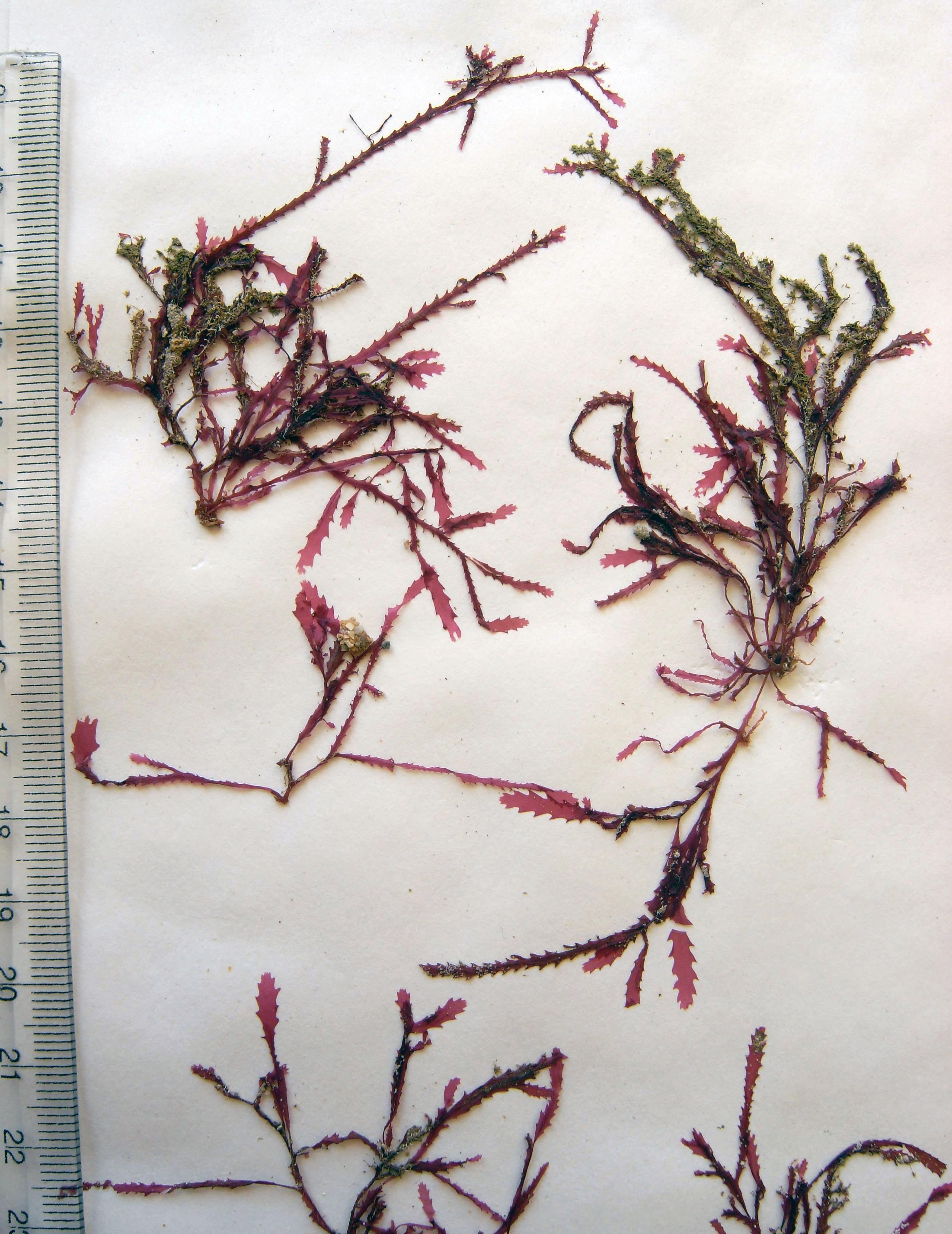
Nienburgia serrata, Three Sisters (BOL).
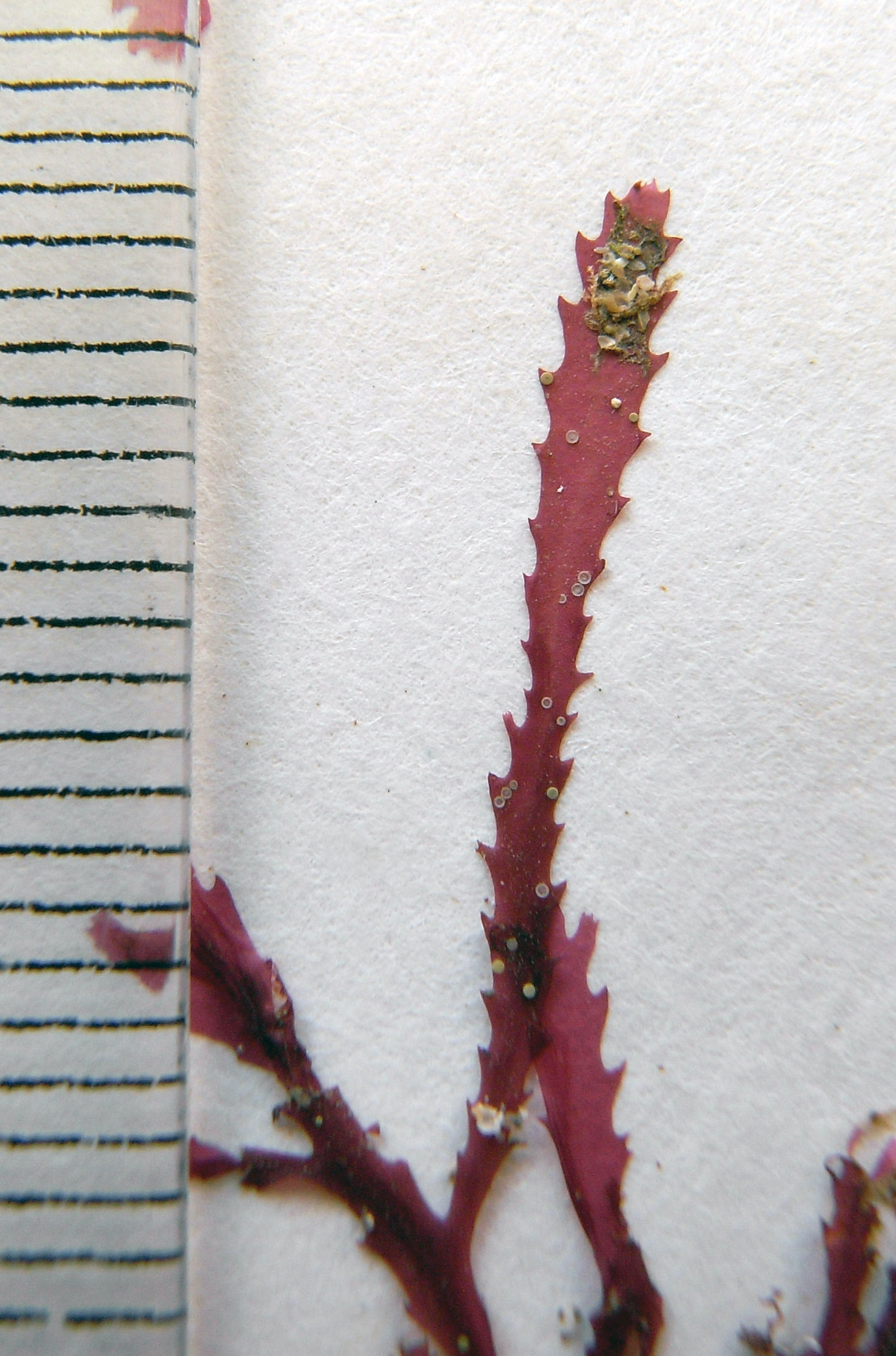
Nienburgia serrata, Nature’s Valley (BOL), showing typical simple dentation.
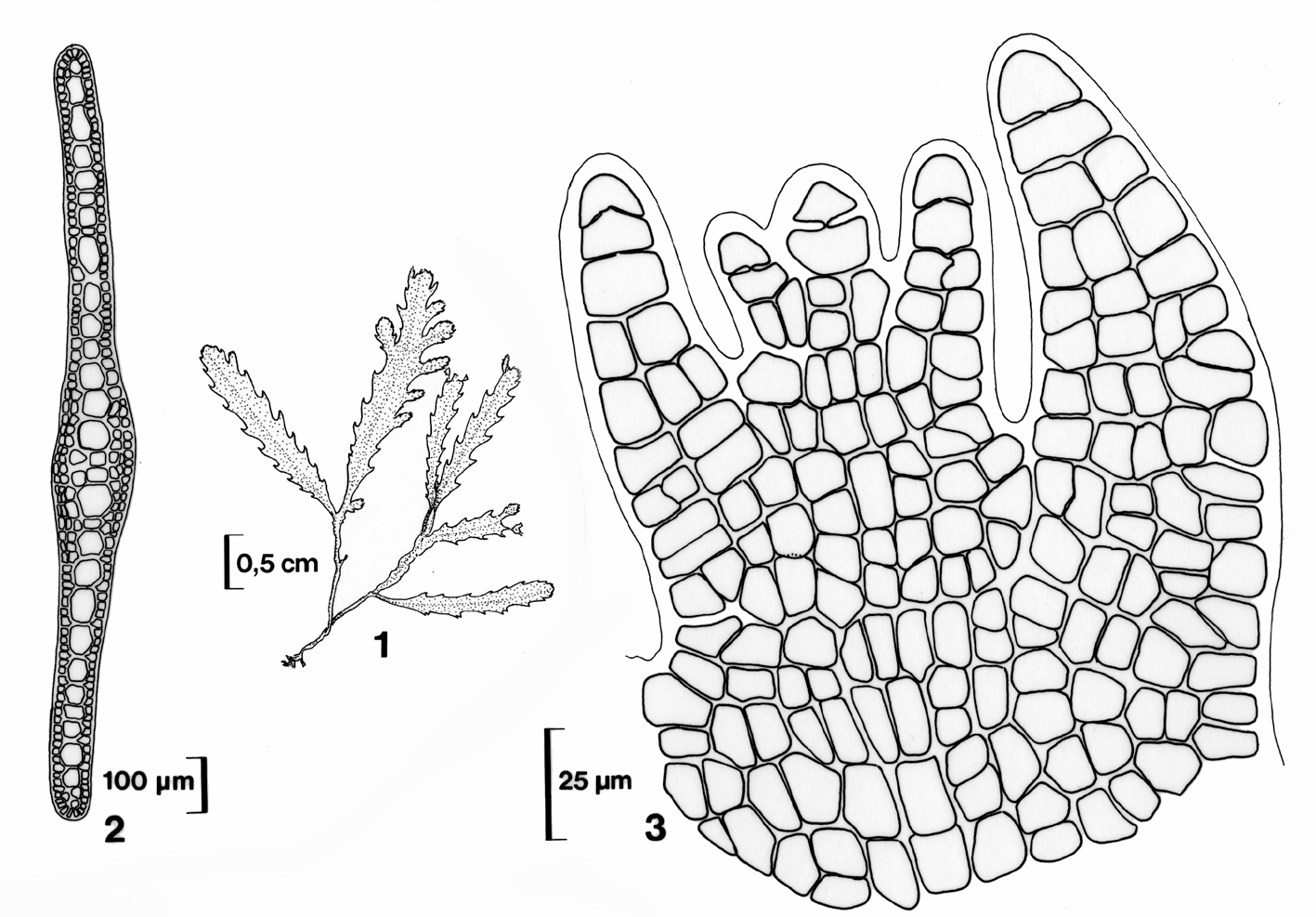
Nienburgia serrata. 1. Habit. 2. Cross section. 3. Thallus apex. Reproduced from Stegenga et al. (1997).
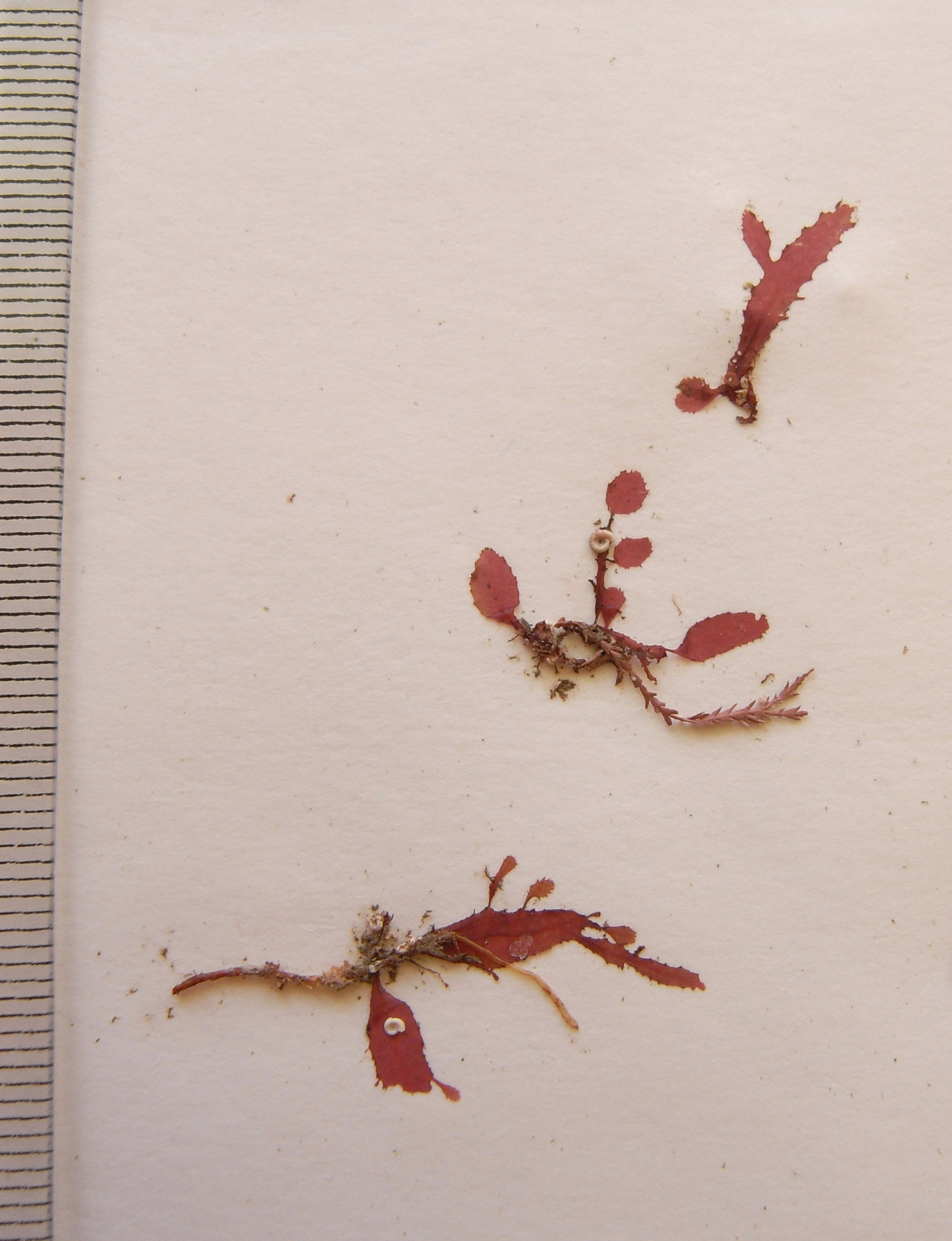
Nienburgia sp? Specimens from 24m depth, Tsitsikamma. See note 1 under N. serrata.
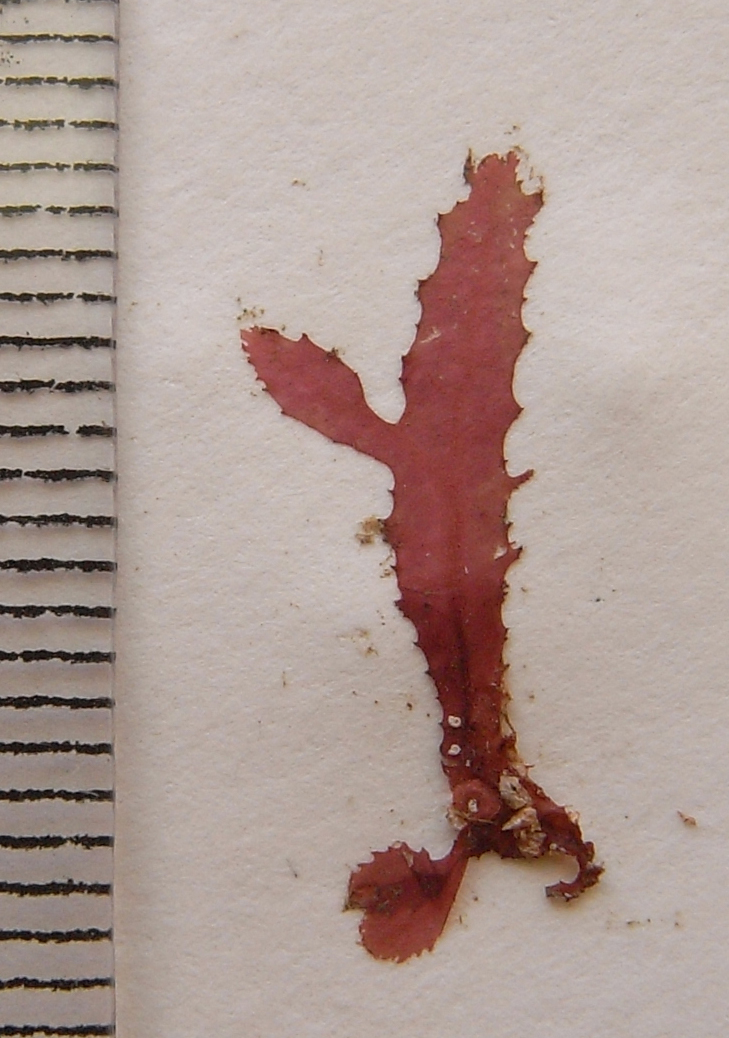
Nienburgia sp? Detail of irregular dentation. Tsitsikamma, 24 m (BOL). See note 1 under N. serrata.
References Nienburgia serrata
Papenfuss GF 1956. Notes on South African marine algae IV. Journal of South African Botany 2: 65-77.
Stegenga, H., Bolton, J.J. & R. J. Anderson. 1997. Seaweeds of the South African west coast. Contributions from the Bolus Herbarium 18: 655 pp.
Cite this record as:
Anderson RJ, Stegenga H, Bolton JJ. 2016. Seaweeds of the South African South Coast.
World Wide Web electronic publication, University of Cape Town, http://southafrseaweeds.uct.ac.za; Accessed on 09 January 2026.